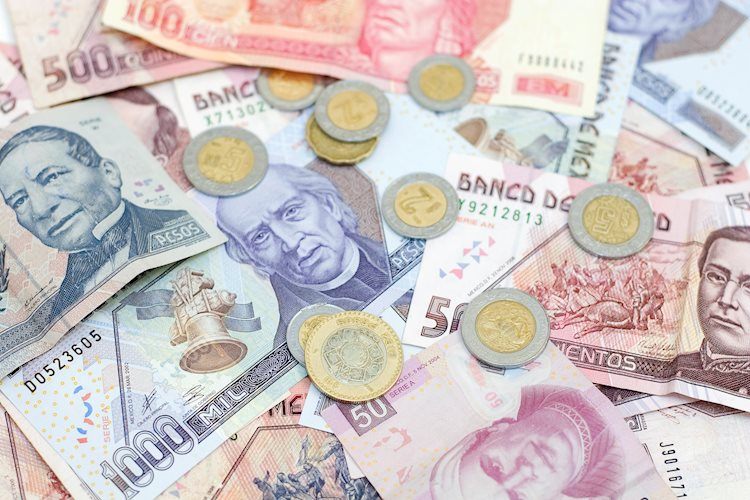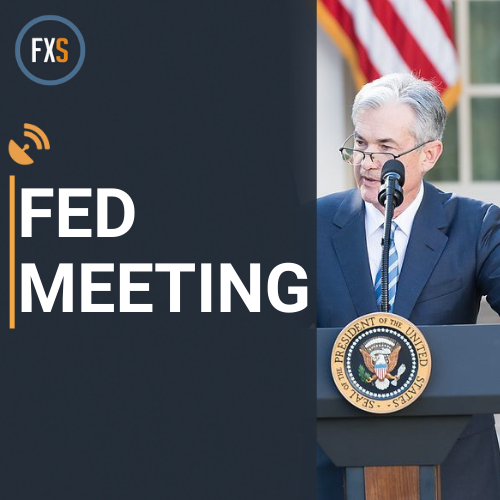Mexican economic growth estimated at 2.1% YoY in March, but market focus shifts to upcoming Retail Sales data.
US Treasury yields increase following lower-than-expected unemployment rate and strong Philly Fed Manufacturing Survey.
The Mexican Peso depreciated against the US Dollar as sentiment shifted sour on Thursday. Treasury yields in the United States (US) are rising following the release of a subdued US jobs report. Market participants remain wary that the Federal Reserve will keep rates “higher for longer,” which would trigger flows toward the Greenback. Therefore, the USD/MXN trades at 17.09, gaining some 0.80%, refresh three-day highs.
Wall Street trades with losses amid a risk-averse scenario. Data-wise, the National Statistics Agency (INEGI) revealed that Mexico’s economy likely grew 2.1% YoY in March based on a preliminary estimate. Nevertheless, traders mainly ignored the report, as they remained focused on Mexico’s Retail Sales report due on April 19.
Across the border, Atlanta Fed President Raphael Bostic recently stated that inflation remains excessively high and indicated that the Federal Reserve still has considerable work to do in addressing inflation, suggesting that rate reductions are not on the horizon. Meanwhile, New York Fed President John Williams emphasized the Fed’s reliance on economic data and expressed satisfaction with the current stance of monetary policy, indicating no urgency to cut rates. Although he does not anticipate rate hikes in his baseline outlook, he acknowledged that the Fed would consider increasing rates if necessary.
On Tuesday, Federal Reserve Chair Jerome Powell said that recent data “lacked further progress on inflation this year,” pointing to the remarkable performance of the US economy.
On Thursday, the US Department of Labor revealed that the number of Americans filing for unemployment was lower than expected, which aligned with the previous reading and suggested that the labor market remains healthy. At the same time, the Philadelphia Fed Manufacturing Index for April crushed estimates.
Given the fundamental backdrop, US Treasury yields are climbing, with the 10-year benchmark note rate up four bps at 4.633%. The US Dollar Index (DXY), which measures the performance of the American currency against six others, climbs past the 106.00 threshold and clocks gains of 0.22%.
On Wednesday, Bank of Mexico (Banxico) Deputy Governor Jonathan Heath commented that caution is important before normalizing monetary policy amid stubbornly sticky inflation. He added, “Maintaining a restrictive monetary policy is key for some time.”
The International Monetary Fund (IMF) revised its economic growth forecasts for Mexico, lowering the 2024 growth expectation from 2.7% to 2.4% and the 2025 forecast from 1.5% to 1.4%. The IMF attributed the reduction in the 2025 forecast to anticipated fiscal tightening by the new administration, which is expected to reverse the fiscal expansion that is driving growth this year. This reversal will involve scaling back current spending policies.
US Initial Jobless Claims for the week ending April 13 came at 212K, below estimates of 215K. Continuing Jobless Claims calculated toward April 6 increased to 1.812 million from 1.810 million but missed estimates of 1.818 million.
The Philadelphia Fed Manufacturing Index rose by 15.5, smashing estimates of 1.5. Other data showed that US Existing Home Sales tumbled 4.3% MoM, from 4.38 million to 4.19 million, below the forecast of 4.2 million.
Geopolitical tensions in the Middle East would likely weigh on the Mexican currency. USD/MXN traders must be aware that any escalation could prompt traders to ditch the Mexican Peso and buy US Dollars.
Data from the Chicago Board of Trade (CBOT) suggests that traders expect the Fed funds rate to finish 2024 at 5.00%, up from 4.95% a day ago.
The USD/MXN has shifted neutral to upward bias, with buyers aiming to test the 200-day Simple Moving Average (SMA) at 17.16. Momentum has shifted in favor of the buyers as the Relative Strength Index (RSI) has broken above the 60 level, with some room before turning overbought.
That said, a decisive breach above the 200-day SMA will expose the year-to-date (YTD) high at 17.38, ahead of the 17.50 psychological area. Once those levels are surpassed, look for a challenge of the 18.00 figure as the next resistance level.
On the other hand, if USD/MXN slides below 17.00, look for a pullback toward last year’s low of 16.62, followed by the April 12 low of 16.40.
Monetary policy in the US is shaped by the Federal Reserve (Fed). The Fed has two mandates: to achieve price stability and foster full employment. Its primary tool to achieve these goals is by adjusting interest rates. When prices are rising too quickly and inflation is above the Fed’s 2% target, it raises interest rates, increasing borrowing costs throughout the economy. This results in a stronger US Dollar (USD) as it makes the US a more attractive place for international investors to park their money. When inflation falls below 2% or the Unemployment Rate is too high, the Fed may lower interest rates to encourage borrowing, which weighs on the Greenback.
The Federal Reserve (Fed) holds eight policy meetings a year, where the Federal Open Market Committee (FOMC) assesses economic conditions and makes monetary policy decisions. The FOMC is attended by twelve Fed officials – the seven members of the Board of Governors, the president of the Federal Reserve Bank of New York, and four of the remaining eleven regional Reserve Bank presidents, who serve one-year terms on a rotating basis.
In extreme situations, the Federal Reserve may resort to a policy named Quantitative Easing (QE). QE is the process by which the Fed substantially increases the flow of credit in a stuck financial system. It is a non-standard policy measure used during crises or when inflation is extremely low. It was the Fed’s weapon of choice during the Great Financial Crisis in 2008. It involves the Fed printing more Dollars and using them to buy high grade bonds from financial institutions. QE usually weakens the US Dollar.
Quantitative tightening (QT) is the reverse process of QE, whereby the Federal Reserve stops buying bonds from financial institutions and does not reinvest the principal from the bonds it holds maturing, to purchase new bonds. It is usually positive for the value of the US Dollar.
Share:
Feed news
Information on these pages contains forward-looking statements that involve risks and uncertainties. Markets and instruments profiled on this page are for informational purposes only and should not in any way come across as a recommendation to buy or sell in these assets. You should do your own thorough research before making any investment decisions. FXStreet does not in any way guarantee that this information is free from mistakes, errors, or material misstatements. It also does not guarantee that this information is of a timely nature. Investing in Open Markets involves a great deal of risk, including the loss of all or a portion of your investment, as well as emotional distress. All risks, losses and costs associated with investing, including total loss of principal, are your responsibility. The views and opinions expressed in this article are those of the authors and do not necessarily reflect the official policy or position of FXStreet nor its advertisers. The author will not be held responsible for information that is found at the end of links posted on this page.
If not otherwise explicitly mentioned in the body of the article, at the time of writing, the author has no position in any stock mentioned in this article and no business relationship with any company mentioned. The author has not received compensation for writing this article, other than from FXStreet.
FXStreet and the author do not provide personalized recommendations. The author makes no representations as to the accuracy, completeness, or suitability of this information. FXStreet and the author will not be liable for any errors, omissions or any losses, injuries or damages arising from this information and its display or use. Errors and omissions excepted.
The author and FXStreet are not registered investment advisors and nothing in this article is intended to be investment advice.




